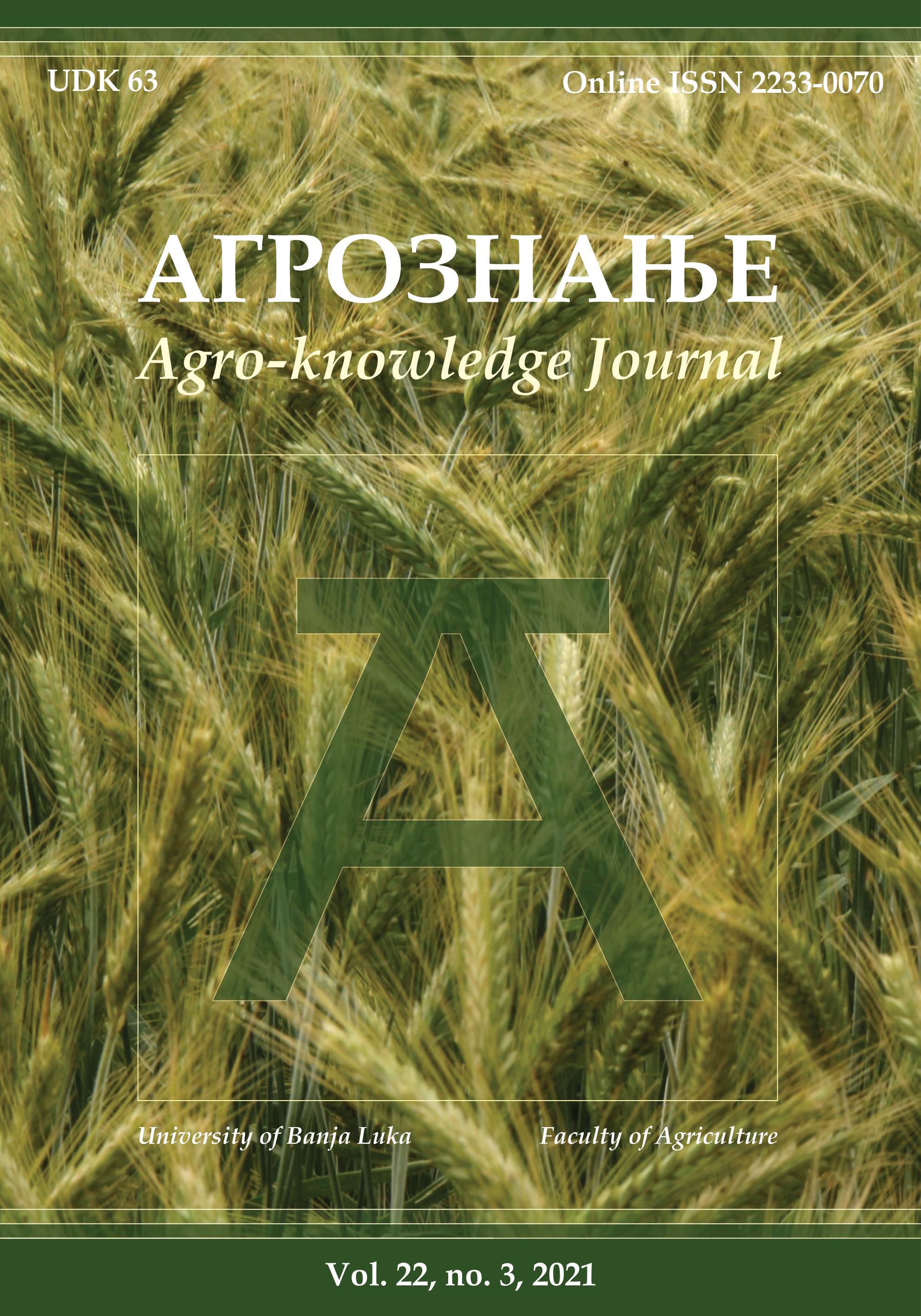Genetic diversity of Lathyrus sativus L. collection and characteristics of seeds produced in Slovenia and Serbia
Генетска разноликост колекције Lathyrus sativus L. и особине зрна произведеног у Словенији и Србији
DOI:
https://doi.org/10.7251/AGREN2103067SAbstract
Grass pea (Lathyrus sativus L.) is a less common and nearly forgotten crop in many countries, including Slovenia and Serbia. In the present study, genetic analysis and seed characteristics of the collection of 21 grass pea accessions from Southeast Europe were examined. The collection was produced in an open-field experiment in two countries/ locations, i.e. Slovenia/Ljubljana – Jablje and Serbia/ Novi Sad – Rimski Šančevi, during the 2019 growing season. To analyse genetic diversity, specific high polymorphic SSR markers were applied. Initial screening at 12 species-specific SSR loci using binary data revealed great genetic diversity among the grass pea accessions within a collection and three genetic groups were formed. Differences in seed size were measured using descriptors for seed length, width and thickness, and 100-seed weight. Furthermore, several seed colour characters using IBPGR descriptors were visually assessed. The average seed length, width, and thickness of the seeds in the collection were 9.0 mm, 8.3 mm, and 5.4 mm, respectively, while 100-seed weight ranged considerably from 11.7 g to 38.9 g. The highest differences between growing location were seen for 100-seed weight where the coefficient of variability reached 23.5%. The examined grass pea accessions had less monochromatic (one colour) and more colourful seeds, with two or three colours. Based on the seed coat colour accessions were classified into several groups, the most numerous being yellow-white and yellow-green seeds. The data obtained will be the basis for describing Lathyrus sativus genetic resources in databases. Further genetic studies such as next-generation sequencing are suggested.
Key words: descriptor; genetic diversity; grass pea; seed size; SSR marker

